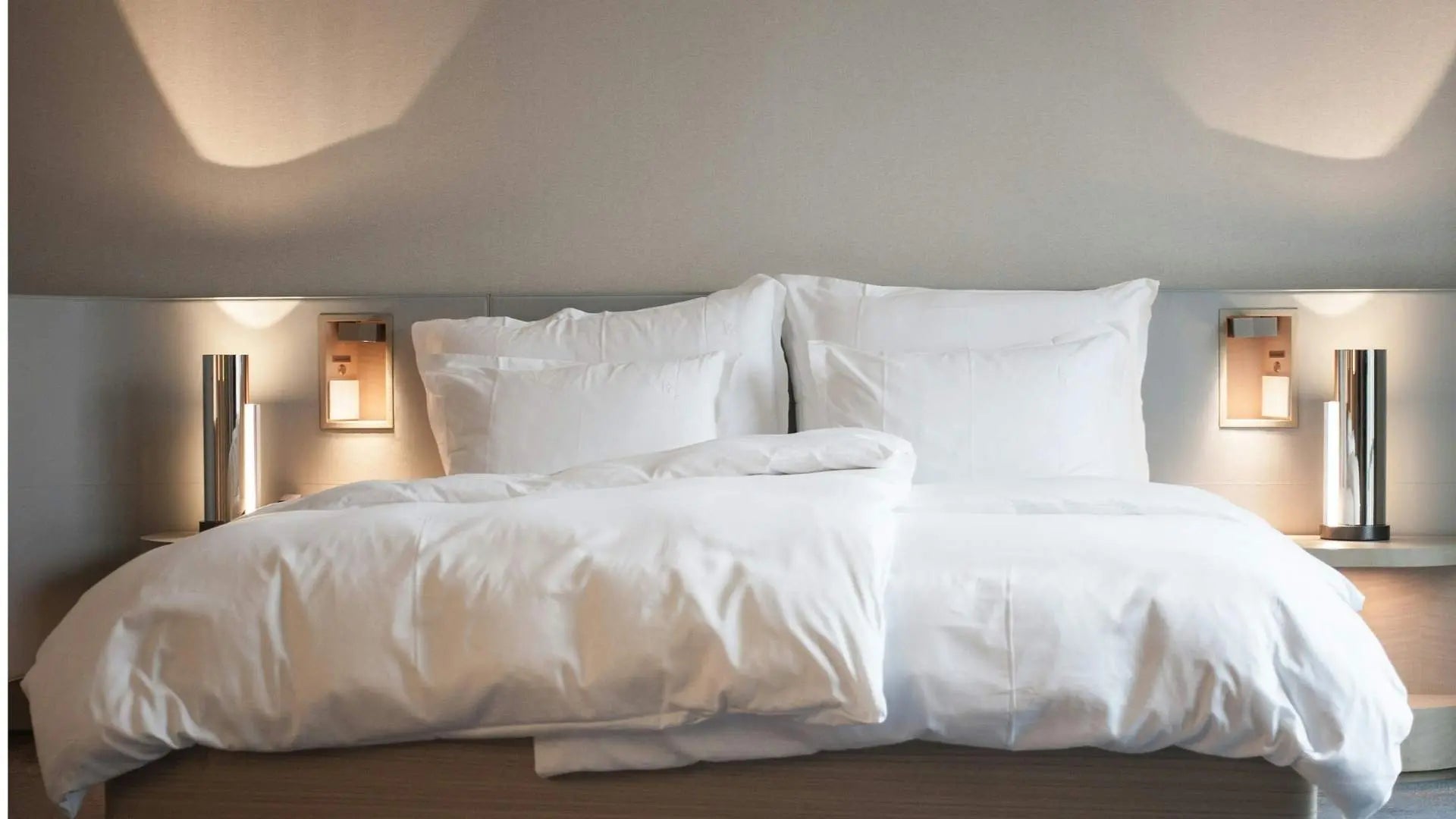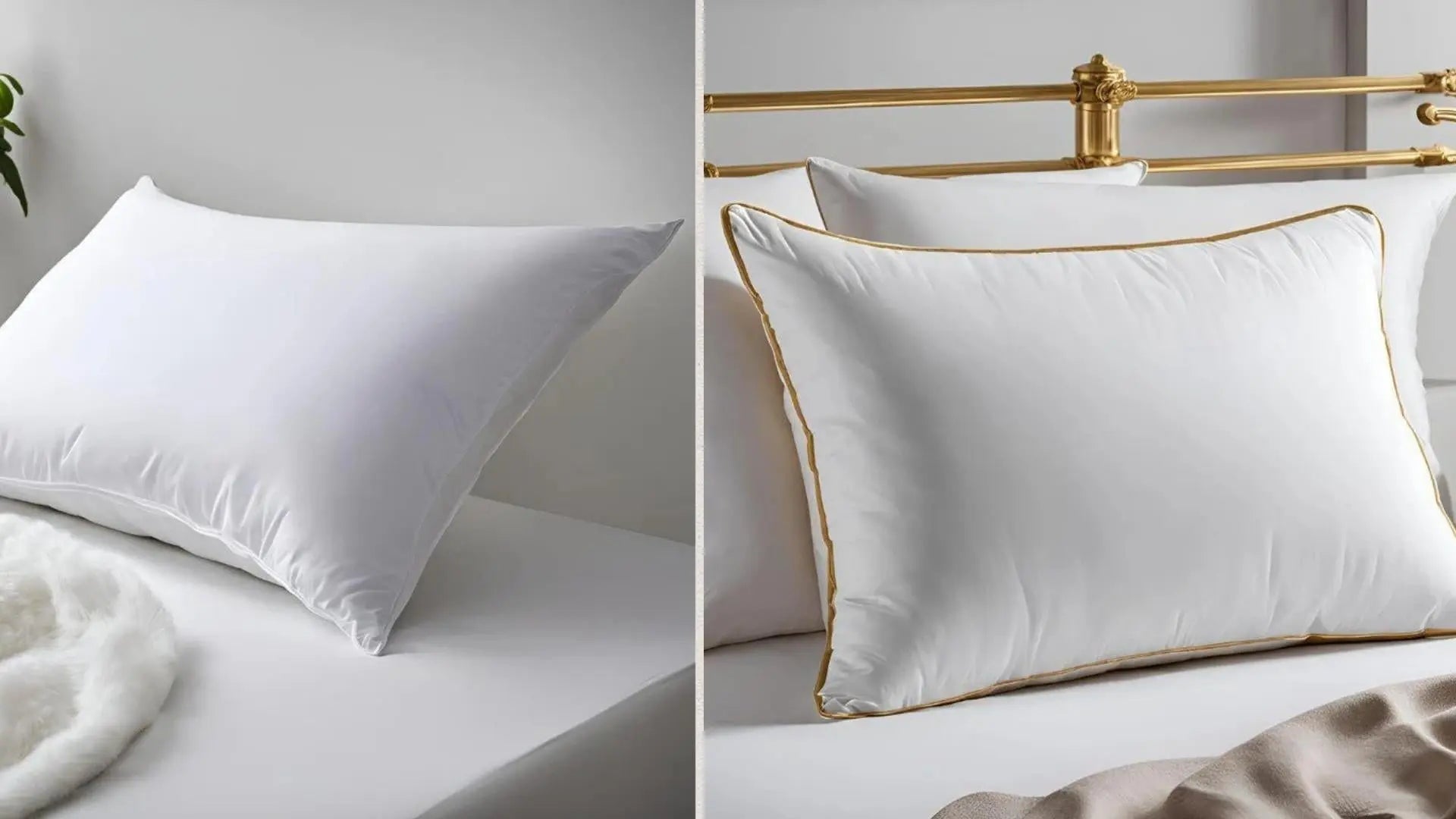When it comes to bedding, the term thread count is often used to imply quality.
Many believe that a higher thread count equates to softer, more luxurious sheets.
However, is that assumption always correct? In reality, the true markers of quality go beyond thread count, particularly for consumers in a warm climate like the UAE.
This guide unpacks the myth around thread count and delves into the elements that genuinely define premium bedding quality.
By the end, you’ll know precisely what to look for in your next bedding purchase.
Understanding Thread Count
Thread count is the measure of the number of threads woven into a square inch of fabric, counted both vertically and horizontally. Typically, higher thread counts are associated with smoother, denser fabrics, but it’s not a one-size-fits-all measure of quality.
Why Thread Count Became Popular
Thread count became a household term in the 1990s when bedding companies started using it to market products. With consumers associating high counts with quality, it became a quick way for brands to signify luxury.
- Misleading Marketing: Bedding labeled as "1000 thread count" or higher often implies superior comfort. But in many cases, these high counts are achieved by using multiple-ply threads, inflating the count artificially.
- Limitation of Thread Count: Above certain levels, factors like fiber quality, weave type, and finishing become far more crucial in determining quality.
Quick Fact: Thread counts between 300 and 500, when combined with quality fibers and weaves, typically offer the best balance of softness, breathability, and durability.
Why Higher Thread Count Doesn’t Always Mean Better Quality
Thread count alone cannot guarantee quality, as there are various techniques to inflate it without improving fabric performance.
Thread Manipulation
Manufacturers may twist multiple strands together to form a single thread, which is then counted multiple times.
While this technique might make the fabric feel heavier, it often results in less breathability and more stiffness, which can be uncomfortable for people living in warmer climates like the UAE.
Thread Count Beyond 500: Is it Really Necessary?
Above a certain point, thread count becomes irrelevant.
When the thread count climbs above 500 or 600, other factors such as fiber quality, weave style, and finishing techniques take on far greater importance.
In fact, thread counts beyond 800 may even weaken the fabric’s durability.
The tight weave of high thread count fabrics can lead to pilling or even tearing over time.
Beyond Thread Count: Comfort and Quality Factors
Fiber quality and weave style make a significant difference in how bedding feels. Higher counts achieved by thread manipulation can feel dense and reduce the fabric's breathability, particularly for hot sleepers.
Check out our bedroom accessories collection.
Durability Concerns
Extremely high thread counts (800+) may weaken fabric integrity. The tight weaving of more threads in a small area creates stress points, leading to pilling and reduced longevity over time.
|
Common Myths |
Reality |
|
High thread count equals softness |
Fiber quality and weave are more important in creating softness. |
|
High thread count means longer life |
Extremely high counts can make fabrics prone to tearing. |
|
Thread count alone determines luxury |
True luxury relies on materials, weaves, and fabric finishing. |
Core Factors in Premium Bedding Quality
Understanding these key elements will help you make a better-informed choice for your bedding.

1. Fiber Quality
While thread count is an easy number to focus on, it doesn't define the overall comfort and quality of bedding.
Let’s dive into the essential elements that contribute to a truly luxurious sleep experience
- Egyptian Cotton: This high-quality cotton, often considered the “gold standard,” has extra-long fibers that result in a soft, smooth fabric. It’s durable and gets softer with each wash.
- Pima Cotton: Similar to Egyptian cotton in quality but typically more affordable.
- Linen: Known for its exceptional breathability and cool feel, linen is ideal for warm climates. It starts out slightly coarse but becomes incredibly soft over time.
- Bamboo: Bamboo bedding is eco-friendly, hypoallergenic, and moisture-wicking, which keeps you comfortable in humid climates.
Discover Raia Home’s Egyptian Cotton Collection and Linen Bedding Collection.
2. Weave Type
The weave of your bedding affects not only the feel but also its durability and breathability. Common weave types include:
- Percale: A plain weave known for its crisp, cool feel. Percale is ideal for hot climates due to its breathability and lightweight texture.
- Sateen: Sateen has a tighter weave that gives it a soft, smooth finish with a slight sheen. It feels warmer, making it better suited for colder months or air-conditioned rooms.
- Twill: Twill weave has a diagonal pattern that makes it heavier and more durable. It offers a textured, cozy feel and is ideal for those who prefer a weightier fabric.
|
Weave Type |
Feel |
Ideal For |
|
Percale |
Cool, crisp |
Warm climates, light sleepers |
|
Sateen |
Soft, smooth |
Colder months, cozy comfort |
|
Twill |
Textured, durable |
Cozy, weighty bedding lovers |
3. Yarn Quality and Size
The yarn’s size and quality play a crucial role in the smoothness and longevity of the fabric.
High-quality bedding typically uses long-staple or extra-long-staple cotton, which is softer and more resilient.
These types of fibers are also less likely to fray and break, providing longer-lasting bedding
4. Fabric Finishing Techniques
Premium bedding often undergoes finishing processes that improve comfort and durability:
- Singeing: This process removes stray fibers, giving the fabric a smoother, softer feel.
- Mercerization: This strengthens the fabric and adds a slight sheen, enhancing its overall appearance and feel.
- Pre-shrinking: Ensures that your bedding doesn’t shrink after washing, preserving its shape and size.
These finishing touches elevate the feel and quality of luxury bedding, making a noticeable difference in the user experience.
Best Materials for Luxury Bedding

Choosing the right material can significantly enhance sleep comfort, especially in warm climates. Here’s a breakdown of the top materials in premium bedding.
Egyptian Cotton
- Description: Egyptian cotton is known for its long fibers, making it smooth, soft, and highly durable. It’s breathable and only gets softer with each wash.
- Ideal For: Those seeking classic luxury, softness, and durability.
- Climate Compatibility: Suitable for both warm and cool climates, as it adapts well to temperature changes.
Linen
- Description: Linen is made from flax fibers and has natural cooling properties. Though slightly coarse initially, it softens with every wash and lasts for decades with proper care.
- Ideal For: Warm climates and those who prefer a casual, relaxed feel.
- Climate Compatibility: Excellent for hot, humid environments, as it regulates body temperature effectively.
Discover Raia homes high quality table linens
Bamboo
- Description: Bamboo bedding is smooth, breathable, and hypoallergenic. It’s an eco-friendly option that wicks moisture and remains fresh, even in humid conditions.
- Ideal For: Sensitive skin, environmentally conscious consumers, and those in warm climates.
- Climate Compatibility: Ideal for UAE’s hot climate, keeping sleepers cool and comfortable.
|
Material |
Feel |
Durability |
Best for |
|
Egyptian Cotton |
Smooth, soft |
High |
Luxurious, everyday use |
|
Linen |
Cool, textured |
Very High |
Hot climates, casual elegance |
|
Bamboo |
Silky, moisture-wicking |
High |
Sensitive skin, eco-friendly |
Explore our Egyptian Cotton Bedding, Linen Sheets, and Bamboo Duvet Sets.
Thread Count and Climate Considerations
Living in a hot, dry climate like the UAE means prioritizing breathability and cooling properties in your bedding.
Here are a few tips:
Climate-Specific Bedding Tips
- Choose Lightweight Weaves: Opt for breathable fabrics like percale or linen. These materials help regulate body temperature, preventing overheating.
- Select Natural Fibers: Natural fibers like Egyptian cotton, linen, and bamboo are much more breathable than synthetic fabrics, making them better suited for hot climates.
- Thread Count Recommendations for Warm Climates: A thread count of 300-400 in high-quality cotton or linen provides the perfect balance of softness, breathability, and durability. Anything higher might feel too heavy or lack airflow.
Learn more about Raia Home’s Breathable Bedding Options.
Practical Tips for Selecting Quality Bedding
To choose bedding that delivers both luxury and longevity, consider the following factors:
1. Prioritize Material Over Thread Count
Choose natural fibers with long staples, such as Egyptian cotton or linen. These materials are known for durability, softness, and superior temperature regulation.
2. Look for Sustainability Certifications
For eco-conscious consumers, look for certifications like:
- GOTS (Global Organic Textile Standard) for organic cotton
- OEKO-TEX certification to ensure fabric is free from harmful chemicals
3. Match Weave to Personal Preference
- Percale: For a cool, crisp feel
- Sateen: For a silky, cozy experience
- Twill: For durability and texture
4. Consider Fabric Finishing
High-quality bedding may feature finishing processes like mercerization for enhanced durability or pre-shrinking to prevent shrinkage.
|
Checklist for Premium Bedding |
|
Choose natural, long-staple fibers |
|
Look for eco-friendly certifications |
|
Match weave type to personal preferences |
|
Check for mercerization and pre-shrinking |
|
Opt for breathable fabrics in warm climates |

Comparison of Key Quality Factors in Bedding
Here’s a summary table for quick reference when assessing quality bedding options.
|
Factor |
Importance |
Examples |
|
Fiber Quality |
Impacts softness, durability, and breathability |
Egyptian cotton, linen |
|
Weave Type |
Affects texture and warmth |
Percale, sateen, twill |
|
Yarn Quality and Size |
Determines fabric’s longevity and smoothness |
Long-staple cotton |
|
Fabric Finishing |
Adds durability, enhances comfort |
Mercerization, pre-shrinking |
User-Centric Tips for Choosing Luxury Bedding
Here are practical tips to help you choose the perfect bedding:
- Identify Climate Needs: For hot climates, choose breathable fabrics like Egyptian cotton or linen with a moderate thread count (300-400).
- Set Comfort Priorities:
- For a Cool Feel: Opt for percale or linen weaves.
- For a Silky Soft Touch: Choose sateen woven with long-staple cotton.
- Invest in Eco-Friendly Choices: Sustainable options, such as GOTS-certified organic cotton, combine luxury with environmental responsibility.
Check out Raia Home’s Sustainable Luxury Bedding.
Conclusion
In premium bedding, quality extends beyond thread count. Understanding the role of fiber, weave, and finishing techniques helps you choose bedding that not only looks luxurious but also feels comfortable.
For UAE residents seeking quality bedding suited to the climate, materials like Egyptian cotton, linen, and bamboo offer excellent temperature regulation.
Raia Home’s exclusive bedding collections incorporate these quality elements, ensuring that every piece brings comfort, elegance, and sustainability into your home.
With the right knowledge, you can invest in luxury bedding that enhances your sleep experience and elevates your living space.






Leave a comment
This site is protected by hCaptcha and the hCaptcha Privacy Policy and Terms of Service apply.